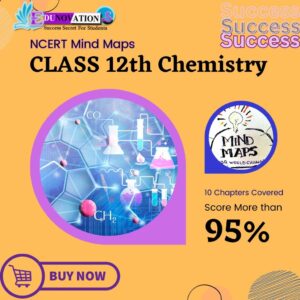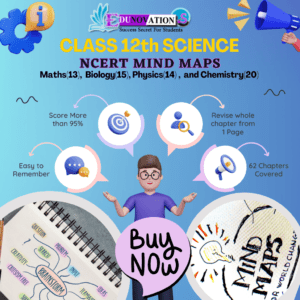Discover the breakthrough achievement of a pure quantum state without cooling, enabling room-temperature quantum control and paving the way for advanced quantum technologies.
Introduction: Quantum Realities Redefined
In an extraordinary scientific advance, researchers at ETH Zurich have reported the first instance of a pure quantum state without cooling—achieved entirely at room temperature. This surpasses a long-held barrier in quantum physics, which held that quantum behavior could only emerge under extreme, cryogenic conditions. This breakthrough ushers in a new era of accessible, efficient quantum technologies—no freezing required.
Breaking the Ice: Why “Pure Quantum State Without Cooling” Matters
Traditionally, probing quantum phenomena required near-absolute-zero environments to minimize thermal interference. But this research shatters that paradigm. By suspending a silica nanocluster—composed of hundreds of millions of atoms—using laser-based levitation and stabilizing its motion in ultra-high vacuum, scientists achieved a pure quantum state without cooling. Astonishingly, 92% of the cluster’s motion was dominated by quantum fluctuations, leaving only 8% accounted for by classical physics.
The Science Behind This Quantum Milestone
Optical Levitation in Vacuum
At the heart of this achievement lies optical levitation, a process where a highly focused laser beam—acting as optical tweezers—is used to trap a tiny nano-cluster of material in a vacuum chamber. This vacuum drastically reduces interference from air molecules, allowing the nano-cluster to exist in a more controlled environment. By holding the cluster in place with photons rather than mechanical supports, researchers avoid unwanted vibrations and disturbances, a critical step toward achieving a pure quantum state without cooling.
Optomechanical Control
Once levitated, the nano-cluster still experiences microscopic movements called zero-point fluctuations—the smallest possible quantum vibrations allowed by nature. Through advanced optomechanical control, scientists managed to isolate and monitor these movements with extraordinary precision. This isolation is crucial because even the tiniest mechanical noise can destroy the fragile pure quantum state without cooling.
Quantum Purity Confirmed
To measure the state’s purity, the team employed sideband thermometry, a method that examines the frequency shifts in scattered light to estimate a system’s energy level. The results showed just 0.04 quanta of motion—meaning the nano-cluster was virtually motionless at a quantum level. This measurement confirmed that the system had successfully reached a pure quantum state without cooling, something previously thought possible only under cryogenic conditions.
Laser Phase Noise Suppression
One of the major challenges in quantum experiments is laser phase noise, tiny fluctuations in the laser’s frequency that can degrade measurement accuracy. The researchers overcame this by introducing a “noise eater”, a feedback system that actively cancels out laser imperfections. This noise suppression was critical to preserving the pure quantum state without cooling, ensuring the laser itself didn’t disturb the trapped particle.
High-Finesse Cavity Coupling
To further enhance stability, the nano-cluster was coupled to a high-finesse optical cavity—a precisely engineered chamber that recirculates light many times. This setup increased the efficiency of optical cooling techniques, even though no traditional cryogenic cooling was used. It also amplified the interaction between the light and the particle, locking in the pure quantum state without cooling with unprecedented stability.
The outcome? A 92% state purity achieved entirely at room temperature, surpassing many setups that rely on expensive and bulky cryogenic systems.
Toppers Use Mind Maps to score more than 95%
NCERT Class 11th Commerce Mind Maps
Add to cartOriginal price was: ₹999.00.₹199.00Current price is: ₹199.00.NCERT Class 12th Chemistry Mind Maps
Add to cartOriginal price was: ₹199.00.₹75.00Current price is: ₹75.00.NCERT Class 12th Commerce Mind Maps
Add to cartOriginal price was: ₹999.00.₹199.00Current price is: ₹199.00.NCERT Class 12th Science Mind Maps
Add to cartOriginal price was: ₹999.00.₹199.00Current price is: ₹199.00.NCERT Mind Maps For Class 10th
Add to cartOriginal price was: ₹999.00.₹199.00Current price is: ₹199.00.
Purchase Today
Why This Discovery Changes Everything
Democratizing Quantum Tech
The ability to achieve a pure quantum state without cooling dramatically reduces both cost and complexity in quantum research. It eliminates the need for cryogenic infrastructure, opening the door for smaller labs, universities, and startups to explore quantum technologies without multimillion-dollar budgets.
Portable Quantum Devices
By removing the dependency on bulky cryostats, quantum devices—such as sensors for navigation, medical imaging, and environmental monitoring—can become compact, mobile, and commercially viable. This breakthrough means we could one day see pure quantum state without cooling technology integrated into everyday tools and applications.
Scientific Versatility
This approach allows researchers to set up and run quantum experiments more quickly and at lower cost, accelerating the pace of discovery. Whether in fundamental physics, precision measurement, or engineering innovation, the pure quantum state without cooling method opens up possibilities that were previously locked behind the barriers of cryogenics.
Broader Impacts Across Sectors
| Sector | Potential Breakthrough |
|---|---|
| Sensors & Navigation | Ultra-sensitive devices powered by ambient quantum systems |
| Quantum Computing | Scalable architectures without cooling overhead |
| Medical Diagnostics | New imaging modalities detecting minute signals |
| Scientific Instruments | Broader deployment of quantum sensors in diverse fields |
Voice of the Researchers
“Achieving a pure quantum state without cooling is like building a vehicle that carries more cargo using less fuel,” quipped Professor Martin Frimmer, capturing the elegance and efficiency of the breakthrough. At the same time, lead researcher Lorenzo Dania acknowledged overcoming what was once considered impossible.
Internal Learning Resources for Students and Educators
Enhance your knowledge of quantum mechanics, optics, and physics innovation through:
- NCERT Courses for foundational science
- Current Affairs to stay updated
- Notes, MCQs, and Videos for structured learning
- Free NCERT PDFs & Mind Maps for visual and revision tools
For Schools: Educate with Innovation
This milestone offers a compelling case study for science classes and public engagement. For schools looking to showcase such breakthroughs or create a science news portal, consider web solutions from Mart Ind Infotech.
FAQs: Exploring “Pure Quantum State Without Cooling”
- What does “pure quantum state without cooling” mean?
A quantum state achieved at room temperature—92% purity—without cryogenic systems. - How was the silica nanocluster stabilized?
Through optical tweezers and high-vacuum conditions. - Why is 92% purity significant?
It sets a new record for ambient quantum control, surpassing cryogenic benchmarks. - What technique confirmed quantum purity?
Sideband thermometry measured the small phonon occupation (0.04 quanta). - How was laser noise mitigated?
A “noise eater” actively reduced phase noise in the optical setup. - Can this method make quantum sensors practical?
Yes—by removing cooling dependencies, sensor systems can be more compact and accessible. - Which applications benefit most?
Sensing, navigation, computing, medical imaging, and basic science instruments. - Who led this research?
The work was led by ETH Zurich’s photonics group under Prof. Martin Frimmer and postdoc Lorenzo Dania. - Is this approach more cost-effective?
Absolutely—no cryogenic infrastructure means significant savings. - How does this influence quantum education?
It provides an excellent modern example for teaching practical quantum physics.














